I am creating a stock trading simulator where the last days's trade price is taken as opening price and simulated through out the current day.
For that I am generating random double numbers that may be somewhere -5% of lastTradePrice and 5% above the lastTradePrice. However after around 240 iterations I see how the produced double number gets smaller and smaller closing to zero.
Random rand = new Random();
Thread.Sleep(rand.Next(0,10));
Random random = new Random();
double lastTradeMinus5p = model.LastTradePrice - model.LastTradePrice * 0.05;
double lastTradePlus5p = model.LastTradePrice + model.LastTradePrice * 0.05;
model.LastTradePrice = random.NextDouble() * (lastTradePlus5p - lastTradeMinus5p) + lastTradeMinus5p;
As you can see I am trying to get random seed by utilising Thread.sleep(). And yet its not truly randomised. Why is there this tendency to always produce smaller numbers?

Update:
The math itself is actually fine, despite the downwards trend as Jon has proven it. Getting random double numbers between range is also explained here.
The real problem was the seed of Random. I have followed Jon's advice to keep the same Random instance across the thread for all three prices. And this already is producing better results; the price is actually bouncing back upwards. I am still investigating and open to suggestions how to improve this. The link Jon has given provides an excellent article how to produce a random instance per thread.
Btw the whole project is open source if you are interested. (Using WCF, WPF in Browser, PRISM 4.2, .NET 4.5 Stack)
The TransformPrices call is happening here on one separate thread.
This is what happens if I keep the same instance of random:

And this is generated via RandomProvider.GetThreadRandom(); as pointed out in the article:
